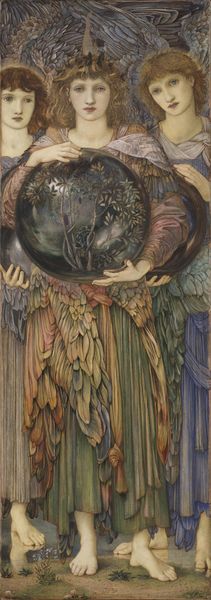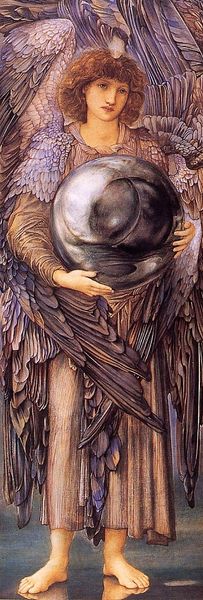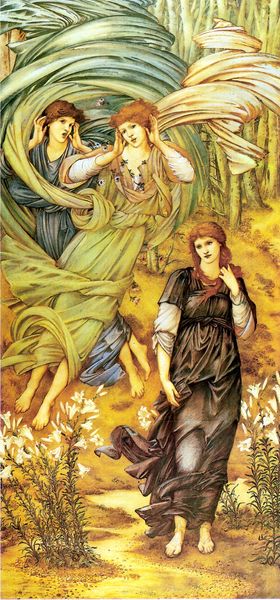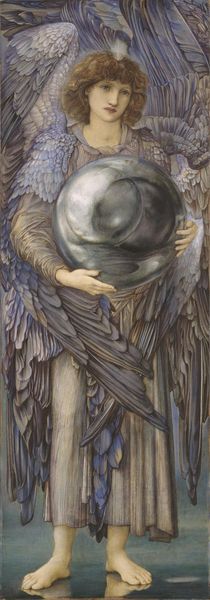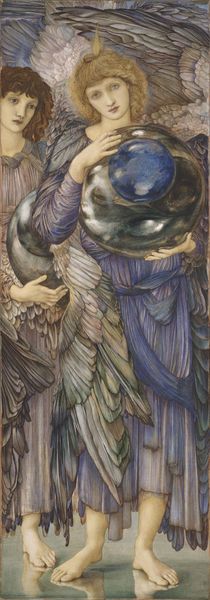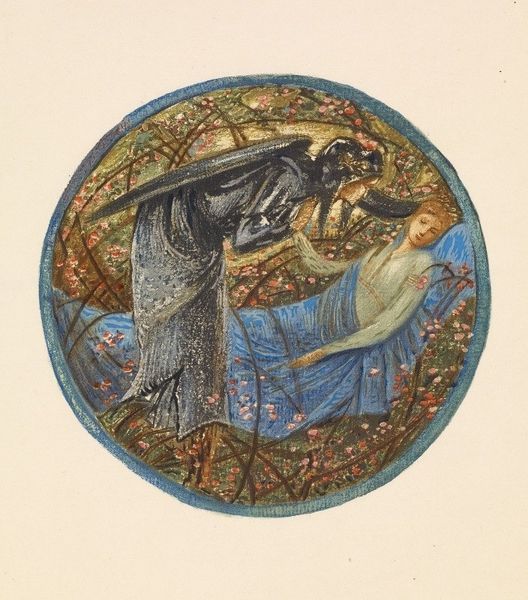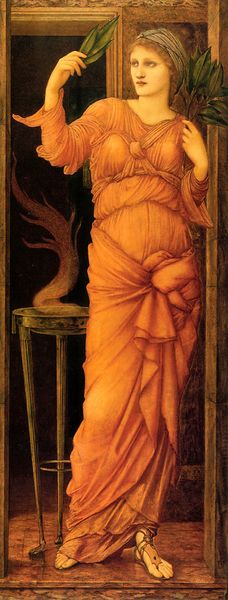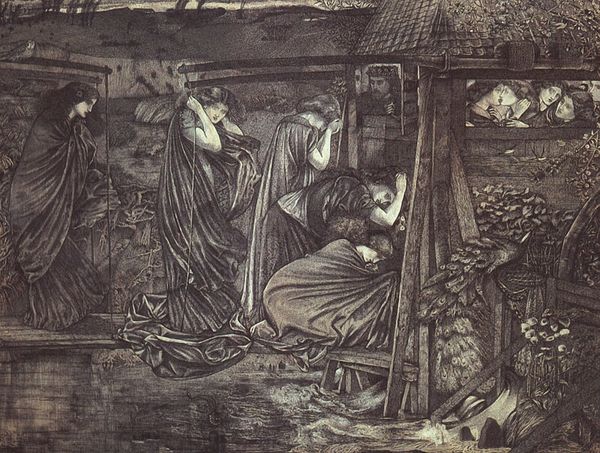
painting, oil-paint
#
portrait
#
fantasy art
#
painting
#
oil-paint
#
fantasy-art
#
figuration
#
oil painting
#
naive art
#
christianity
#
symbolism
#
history-painting
#
pre-raphaelites
#
watercolor
Dimensions: 102.1 x 35.9 cm
Copyright: Public domain
Curator: Edward Burne-Jones painted "Days of Creation, The 3rd Day" in 1876. It’s currently residing here at the Harvard Art Museums. Editor: My initial reaction is one of ethereal serenity. The pale colors and flowing lines give it a very dreamlike, otherworldly feel. And what incredible detail, especially on the gowns which are layered with feathers. Curator: Absolutely, Burne-Jones was heavily influenced by the Pre-Raphaelite movement, prioritizing beauty and symbolism above realism, as we can see with the incredible texture he creates with oil paints in this depiction. But this isn’t just decorative beauty; the subject matter is intensely important: a divine narrative, literally the day that land and vegetation were created in Genesis. Editor: Precisely. Note how the angels are holding the orb containing a meticulously rendered landscape. The artist's focus on representing depth through shadow and meticulous detail is outstanding. Also, observe the formal choices— the vertical composition emphasizes the celestial subject. Curator: Speaking of material reality intruding, you can see the direct influence of William Morris’s aesthetic and political ideology, since Burne-Jones collaborated frequently with the Arts and Crafts movement that revived medieval craftsmanship. This kind of aesthetic decision was a move towards challenging industrial production’s dominance in Britain’s cultural sphere. Editor: An astute observation! It allows for a richer interpretation of the symbolism inherent in the composition. By representing Creation as carefully crafted, Burne-Jones elevates both the divine act and the act of making. Curator: Right. The level of manual work becomes a virtue. Editor: The three figures together exude grace but there’s something strange about their ungrounded state that draws the eye toward this mystery; almost as if in a dream, suspended in air, watching Creation. Curator: What resonates most with me is seeing how a commitment to craft and material engagement allows for this painting to exist as a testament of devotion that pushes against industrial values and highlights creative freedom. Editor: Yes, Burne-Jones melds this freedom with formal structures that produce an everlasting composition. It is indeed, food for thought.
Comments
No comments
Be the first to comment and join the conversation on the ultimate creative platform.
